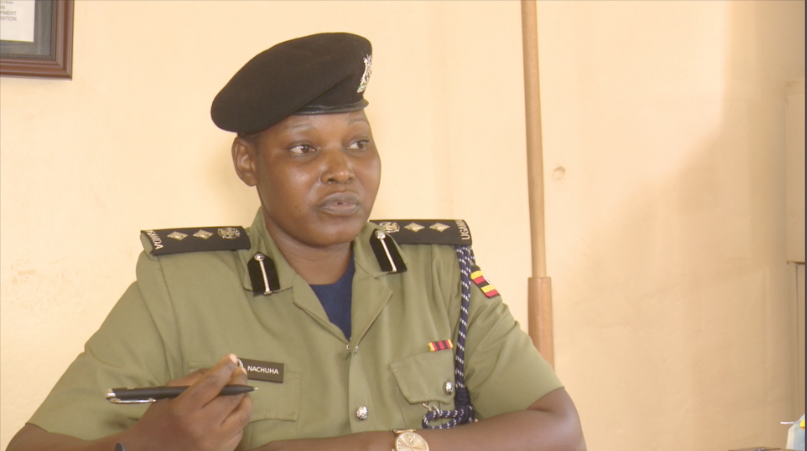Prime
Journalistic truth or the truth?

Writer: Odoobo C. Bichachi. PHOTO/COURTESY
What you need to know:
- The more a media house is associated with journalistic truth, the more it is endeared to the public.
It is often said that “Truth is the holy grail of journalism”. Truth is what builds trust and credibility in the business of news. But what is “truth”?
Truth is defined in the Merriam-Webster dictionary as “...the body of real things, events, and facts”. Is this the truth we talk about in journalism?
In late 1990s, a group of journalists in the USA, calling themselves the Committee of Concerned Journalists, struggled with this question and settled for Bill Kovach and Tom Rosenstiel’s definition as published in their book, “The Elements of Journalism”.
It says: “Journalistic truth" is not truth in the ordinary sense of the word, much less in the way philosophers understand it. Journalistic truth is a ‘sorting out' process that occurs over time through interaction ‘among the public, newsmakers, and journalists’.”
They explained that to get to “journalistic truth”, reporters and editors have to strip the information they receive [and are working to put out] of any misinformation, disinformation, or self-promoting bias.
Second, that “accuracy is the foundation upon which everything else is built – context, interpretation, comment, criticism, analysis and debate. The truth, over time, emerges from this...”
Rigorous journalistic process is what can lead to “the best obtainable version of the truth”, they said, and it is what endears audiences to different media platforms.
The more a media house is associated with journalistic truth, the more it is endeared to the public. Conversely, the less it is associated
with truth, the less it attracts audiences.
Daily Monitor’s bold tagline carried on its masthead is “Truth Everyday”. That is a public promise that every day, Daily Monitor journalists shall deploy a meticulous “sorting out "process to deliver to its audiences stories that can be said – and be seen – to be the best obtainable version of the truth.
Daily Monitor indeed does this every day, which is why it has endeared itself to millions of readers in and outside Uganda that read it in print and online.
Many other media houses do the same, which is why in spite of the avalanche of news (a lot of it fake) on social media, many always turn to mainstream media to confirm or get the proper context and perspective to an event. They know that the rigorous editorial processes have stripped the news of any misinformation, disinformation, biases, etc.
But like any process that involves human beings, mainstream media is fallible. When it gets things wrong, the journalist code of ethics prescribes correction or retraction –with an apology if need be. Sometimes this is voluntary while other times it is prompted by a legal suit – or threats of it.
What about when the media gets it wrong on matters where there is no possibility of a suit, or public opprobrium? Sadly, a lot of time this is left to pass and gets repeated all the time that it almost becomes the "truth".
One example of this is the climate and weather stories on Lake Victoria that I have repeatedly pointed out in my past columns. I quote from this story, "Lake Victoria travel alert: All you ought to know” (Saturday Monitor, July 13).
“...the Uganda National Meteorological Authority (UNMA) warned that owing to changing weather patterns, there would be strong winds experienced in June and July on the lake...” Now this is a common phrase you will find in nearly all stories on Lake Victoria in the Uganda media. But it lacks journalistic truth because it doesn’t accurately convey UNMA’s forecasts and their context.
UNMA categorises Uganda’s portion of Lake Victoria (46 percent) into four zones: Entebbe and Northwest, Kyotera and Southwest, Buvuma and Northeast, and Migingo and Southeast. It reports the weather therein accordingly. This is for a reason; Lake Victoria is the whole ecosystem! It is not just around Entebbe, Ssese Islands and environs.
Journalists, however, continue to report the weather/climate of Lake Victoria as if it represents the whole, not specific portions in Uganda.
Just to show how far this is from journalistic truth, Lake Victoria occupies an area of 68,800 sq km. That is bigger than Rwanda (26,338 sq km) and Burundi (27,830 sq km) combined! So, when it is raining or shining in Kigali or Gisenyi, it doesn’t mean the same is happening in Bujumbura or Gitega!
Accuracy, context and subject knowledge are therefore critical to delivering journalistic truth. Their absence only delivers is information, distortion, etc.


